10 Ways to Build an Effective Team: A Complete Guide
Are you struggling to build an effective team within your company? Do you see low morale, lack of productivity, and high turnover rates?
Building an effective team is crucial for the success of any business, yet it can be challenging. It requires a combination of clear goals and objectives, strong leadership, open communication, diversity, trust, and respect among team members.
But where do you begin? How do you know if your team is truly effective? These are important questions to consider when building an effective team within your company, and we intend to answer all your questions.
But before that, here is what Timothy A., a senior corporate investigator has to say about team building and its impact on workplace relationships.
The best part of working together is that you know you always have people. Among the many advantages of team building is the enhancement of relationships between workers. When member A of the team supports member B, B will eventually return the favor. Workers band together to take on challenges and share the Spotlight.
What Is an Effective Team in an Organization?
When we term a team as being "effective," it often:
- Works collaboratively and efficiently towards a common goal or set of goals.
- Practices clear communication, a shared understanding of roles and responsibilities, and a positive and productive team dynamic.
- Adapts to changes and overcomes obstacles to achieve its objectives.
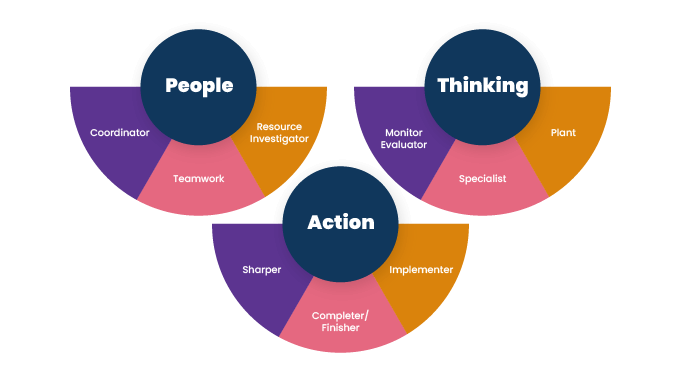
Importance of Effective team in an organization
Having an effective team at your side means half the battle is won.
An absolute team not only contains the basic skillset required to get the job done but also pools complementary skills that bring diverse perspectives and skills, which can lead to more innovative and effective solutions.
But here’s the thing!!
Effective team building is a continuous process. As teams and their members evolve, it's necessary to regularly reassess and adjust the team's approach, goals and strategies.
This includes addressing any issues that may arise, such as conflicts or communication breakdowns, and implementing new strategies to improve performance.
Example
A great example of excellent teamwork was observed in Google in 2012 when it launched Project Aristotle. The company analyzed over 100 operational teams, where hundreds of employees were interviewed over several years. In the end, the conclusion was what competent managers have known for years: the best teams possess sensitivity and listen to one another.
We looked at 180 teams from all over the company. We had lots of data, but there was nothing showing that a mix of specific personality types or skills or backgrounds made an difference. The 'who' part of the equation didn't seem to matter."
Abeer Dubey (Manager, Google Analytics Division)
Attributes of an Effective Team
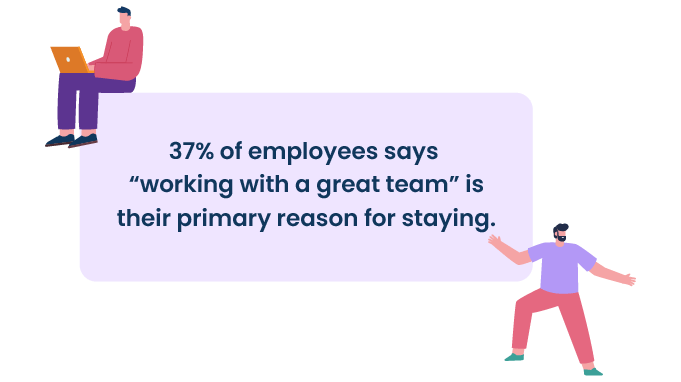
Behind any successful brand or company lies an effective team that showcases certain dominant attributes that shouldn’t be ignored during team building. They are essential for achieving the team's goals and objectives and creating a high-yielding and prolific team.
- Clear goals and objectives provide direction and purpose for the team.
- Strong communication and trust among team members enable them to share ideas and collaborate effectively.
- Diversity and inclusiveness lead to more innovative and effective solutions.
- Collaboration in the workplace and teamwork are vital for achieving common goals.
- Flexibility and adaptability help the team to adapt to changing circumstances.
- Strong leadership guides the team toward achieving its goals and objectives.
- Accountability ensures that team members take ownership of their work.
Steps to build an effective team in an organization
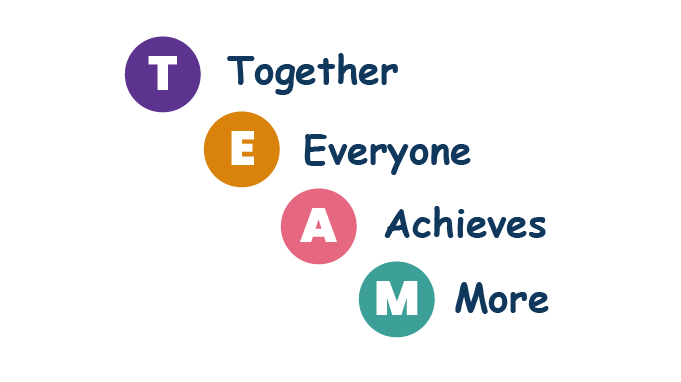
1. Set the Vision and Purpose
Make clear what the team is trying to accomplish, including the overall goal. Are there any changes you would like to make, create, or improve? How does each team member's role contribute to the success? Teamwork and decision-making are guided by a clear, inspiring vision for the future.
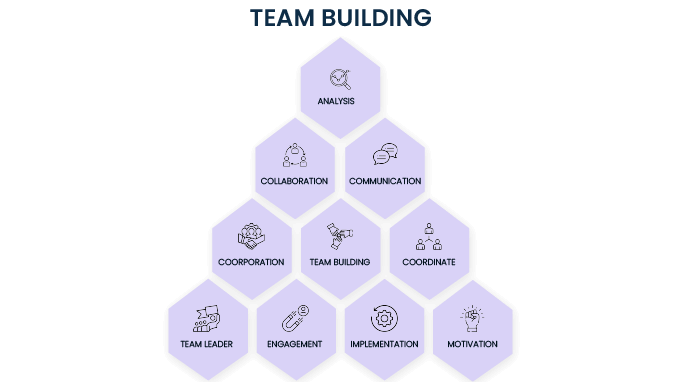
But how do you ensure the members are heading toward the set direction or goal?
Losing purpose while working towards a goal is a pretty common thing. The idea is to reinforce the vision for persistent perusal. It's thus important to address challenges and opportunities as they arise and to regularly assess and adjust the team's approach and strategies as needed.
2.Set Goals for expectations
Setting goals for your team is a tricky step. Without that, your team will be blindsided and lost. Some will have a clean slate, and although they may be open to all cultures, setting expectations and ground rules is important.
It is important to let them know the kind of environment and company culture they are expected to maintain. It will avoid any confrontations and conflicts.
As per a study, the likelihood of employees being engaged in their job is 6 times higher when they know what they are supposed to accomplish and are allowed to work freely. Their quality of life is also 3 times higher.
So, What NOT TO DO while setting expectations?
It is important to hold back while setting expectations. You should consider the team's experience, caliber, and skills before you set them and must not do the following.
Unrealistic expectations
If the expectations are too high, team members may feel overwhelmed and discouraged if they cannot meet them.
Inflexibility
Setting expectations can create a rigid framework within which team members feel they have to operate, which can stifle creativity and innovation.
Lack of ownership
When a leader or manager sets expectations, team members may feel less invested in the team's success, as they feel that the goals differ from theirs.
Negative impact on morale
If team members feel that they are constantly being held to a strict set of expectations, it can lead to lower morale and motivation.
Lack of trust
If expectations are not met, it can create mistrust among team members and between team members and management.
It's important to balance setting expectations with fostering an environment that encourages creativity, autonomy, and teamwork.
3. Assemble your team
Ensure to build your team by pulling in passionate members ready to embrace the company's vision and work towards it. Including members with diverse skills and communities is important so your team can be a tad different and diverse than homogenous teams.

In fact, as per a study, diverse teams with members from different ages, gender, and ethnicity perform better by up to 35% than homogenous teams.
But building an all-comprehensive team is easier said than done. Problems like unconscious bias, stereotypes, and prejudices may hinder your ability to select the right candidates for the job.
So, how to go about it?
- Consciousness, empathy, understanding, cognizance, and acknowledgment of the diverse reach of your team will help you take the right call.
- Encourage open and honest communication and provide a safe space for team members to share their thoughts and concerns.
- It's also important to have clear policies and procedures in place to address any issues of discrimination or prejudice that may arise.
- Finally, don’t forget to trust your gut! Remember, building a team calls for much responsibility on your part as your team members while trying to uphold it.
- Determine the Goals
This is where you step up to your responsibility by educating your team regarding the goals and targets. Breaking the vision into facile and manageable jobs with milestones and achievements will help you lead the team toward success.
Cooperation is the thorough conviction that nobody can get there unless everybody gets there.”
– Virginia Burden, Author
However, problems can arise when determining goals, such as lack of clarity, misalignment, limited perspectives, and inadequate resources.
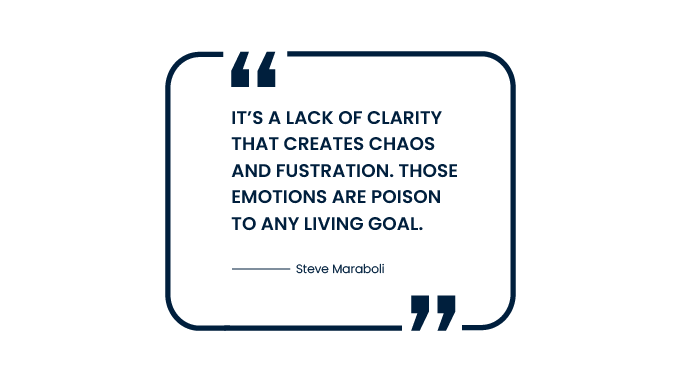
So, how can you avoid such problems?
- Taking time to know each member and explain the goals, investing in team-building events, or bonding exercises can bring everyone on the same page.
- Reinforcement of goals through weekly meetings, brainstorming sessions, and knowledge-sharing discussions is also a good way to ensure a smooth process.
Positive work culture can help to build a sense of unity and cohesion within the team, resulting in greater success in achieving shared goals.
5. Enkindle relations within the team
For a friction-free environment, it is important to engender relations within the team. Respecting team members and colleagues without bigotry is the key to building bonds and molding a high-performance and thriving team.

Talent wins games, but teamwork and intelligence win championships.”
– Michael Jordan
- Monitor and Review
Monitoring and review during team building are essential to evaluate the team's performance and progress towards achieving their goals. If you are focussed on creating an effective team, then asking the following questions will help you realize where you stand in fulfilling goals and tasks.
- What progress has been made toward achieving the team's goals?
- Are team members working effectively together?
- Are there any issues or challenges that the team is facing?
- Are there any areas where you can take action to improve the team's performance?
- Are there any changes that need to be made to the team's goals or objectives?
These questions will give you the much needed wriggle room with your team, especially during roadblocks and conflicts, while helping you augment the team’s potential.
7. Conflict Management Strategy
A set strategy for conflict management is the heart of effective team building. If you cannot handle and sort conflicts for your team, interruptions may become full stops for the projects.
But what is conflict management?
Conflict management is the art of resolving conflicts without compromising goals, respect, and dignity.
It refers to the strategies and techniques that a team leader or manager uses to resolve conflicts and can include effective communication, active listening, problem-solving, and compromise.

The goal of conflict management in team building is to address and resolve issues in a way that is productive and beneficial for the team as a whole rather than allowing conflicts to escalate and harm team dynamics.
8. Consensus is the Key

Consensus can help team building by promoting shared decision-making and ownership among team members. Consensus secures the commitment of every team member entirely, ensuring complete dedication.
When team members are involved in the decision-making process and feel their opinions and ideas are valued, they are more likely to buy into the decisions and work together to implement them.
When employees feel their opinions count, companies could benefit from a 27% decrease in turnover rate, a 40% decrease in safety incidents, and a 12% increase in productivity.
But achieving consensus from a team with heterogeneous skills takes work. It takes a lot of foresight, monologue, and effort to bring a team to sing the same song. Sometimes, however, even that is not enough.
So, what can a manager do to help in such situations?
- The best way to deal with this is to have a ‘conflict kicked Friday' where the members can discuss the issues and pain points.
- Other decision-making tacks like ‘vote of no confidence’ or ‘majority vote’ often come handy to reach a consensus.
- Finally, if nothing works, the manager can act as a tie-breaker, where his decision will be final.

Although nothing beats the glee of having all in the same team, the above methods will surely lead you halfway through, in case the team doesn’t reach a consensus.
9. Celebrate, Acknowledge, and Reward
A simple thank you can take you a long way during team-building exercises. However, with platforms and software overtaking the various aspects of business, you can now make milestones, achievements, and rewards a grand affair.

Customized thank-you notes, personalized messages, emblematic rewards, and monetary rewards are a few ways to acknowledge a member’s contributions.
But if you are asking the question of why acknowledgment and reward are such a big deal, we would love to elaborate on that;
- Celebrating team successes helps to create a positive and uplifting atmosphere, fostering a sense of accomplishment and pride among team members.
- Acknowledging individual efforts helps increase motivation and recognition of hard work, which can increase productivity and employee engagement.
- Rewarding hard work and achievements helps to promote a culture of accountability and ownership, encouraging team members to take on leadership roles and continuously improve.
- Additionally, recognizing and rewarding team membersfor their efforts can build trust and collaboration among team members, fostering a sense of belonging and camaraderie.
Specialized platforms and collaboration tools are dedicated to employee engagement and collaborative work. They help build internal and external relationships. Thus, they enable teams to maintain psychological and social stability surrounding their work-life.
An innovative platform dedicated to employee performance management and redefining corporate rewards is the rewards and recognitions program of Vantage circle. It’s a SAAS-based and AI-fueled platform that redefines the meaning of rewards with its plethora of customized awards and token rewards.
10. An Effective Leader can go a long way
Leadership is much more an art, a belief, a condition of the heart, than a set of things to do.”
-Max De Pree
An effective manager can have a great impact on the team. Leaders are more than just giving instructions and reading guidelines merely. The right leader believes in the evolution of leadership according to the team and molds accordingly.
An effective manager can inspire honesty, innovation, and integrity. A manager can motivate the team in the right way and set the tide toward the right goal.
Similarly, a bad manager can totally ruin the team and lead it toward catastrophe. As they say, ‘ a leader must inspire, or the team will expire’ hold the right ring. After all, a slacking manager can be the biggest misstep for a team.
Conclusion
Team building and teamwork, although different, are continuous processes because they require persistent attention and efforts to maintain and improve the team's effectiveness over time.
Effective team building is like a puzzle. Each team member is a unique piece that, when put together, creates a beautiful and powerful image.
An intuitive leader is like the glue that holds all the pieces together, but it takes the cooperation and commitment of each team member to make the final image come to life. So, don't be a loose piece, be a part of the puzzle and let's make the team-building process fun and successful!
FAQs
1. What is effective team building?
Team building is a process that helps a teams and groups to become more cohesive over time. It takes a little bit of everything to make it great - a dash of trust, a pinch of cooperation, a sprinkle of communication, and a whole lot of cracking eggs (i.e., getting out of your comfort zone). But what you get is a breakfast of champions!"
2. What are 7 team building strategies?
- Communication and active listening
- Trust-building exercises:
- Collaborative problem-solving
- Social and recreational activities
- Recognition and rewards
- Leadership & Coaching
- Setting clear goals & objectives
3. What are the 4 pillars of effective team building?
Think of it like a castle. Communication is the walls, keeping everything inside, while trust serves as the moat, keeping everything secure, while collaboration acts as the army, ready to defend and conquer. Aligning goals is the king, leading the charge, and together they create a fortress of team building success.
4. How do you bring the team closer for effective team building?
- You must be bold and willing to shake things up!
- Try new team-building activities, regularly schedule team retreats, or switch up the office layout to encourage collaboration.
- The key to success is open communication, trust, and willingness to step out of your comfort zone and try new things. So, don't be afraid to mix it up and watch your team soar to new heights of success!
5. What is the 5 big teamwork model?
The 5 big teamwork model suggests that a team's success is influenced by the interplay of five key elements: composition, context, processes, supportive structure, and leadership.
By focusing on these five elements, teams can improve their performance and achieve their goals. The model was developed by Dr. Richard Hackman, has been extensively researched and tested, and has been proven effective in various settings.
6. How do you build team culture?
Building a team culture that fosters success and excellence is not for the faint of heart. It takes bold leadership, clear communication, and a willingness to shake things up. Create opportunities for team members to bond and have fun.
effective team building is like constructing a house. It starts with a strong foundation of shared values and goals, and then you add the bricks of open communication, trust, and collaboration. Throw in a few design touches like recognition and celebration, and voila! You've got a beautiful team culture that will stand the test of time.

















